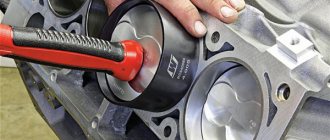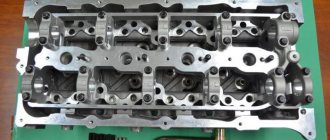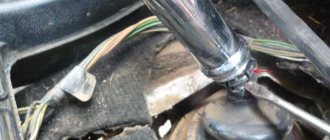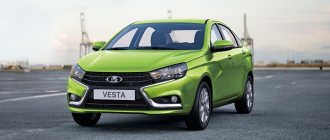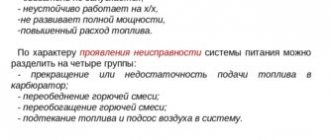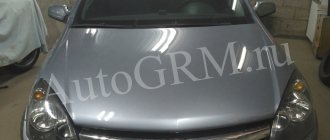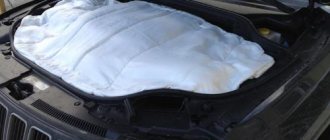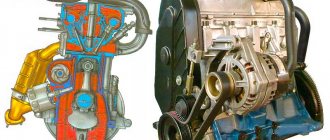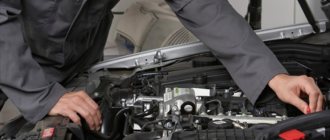Characteristics and benefits received
It is immediately worth noting the 1.4 liter engine. It is preferred instead of 2-liter analogues for efficiency. Despite the modest characteristics, there is 150 hp under the hood. With. For the average driver, this is plenty of power for commuting.
TTX
| Name | 1.4TSI Active (150 HP) DSG 4WD |
| Class | Crossovers |
| Region of origin | Europe |
| Body | 4697х1882х1676х2791 4WD |
| Engine | petrol 1.4, 150 hp |
| checkpoint | Automatic 6 |
| Drive unit | Full |
| Fuel consumption (city) (l/100km) | 9.5 |
| Fuel consumption (highway) (l/100km) | 6.2 |
| Fuel consumption (combined)(l/100km) | 7.5 |
| Curb weight (kg) | 1630 |
| Acceleration time to 100 km/h (sec.) | 9.9 |
| Max. speed (km/h) | 194 |
| Number of pillows | 4 |
| Front axle | 215/65R17 |
| Rear axle | 215/65R17 |
| Price | 1 545 000 ₽ |
Basic equipment
Safety |
| ABS |
| ESP |
| Driver airbag |
| EraGlonass system |
| Remote control central locking |
| Passenger airbag |
| Front side airbags |
Car audio and entertainment |
| Information system with color display |
| CD player with MP3 |
| USB port |
Interior |
| Leather steering wheel |
Appearance |
| Light alloy wheels |
Comfort |
| Electric drive and heated mirrors |
| Front seat height adjustment |
| Heated front seats |
| Dual zone climate control |
It is possible to overtake on an open road without risks, and all-wheel drive remains stable even on icy roads. It is 4WD that is recommended to be looked at first - most of our winters are harsh with a decent amount of snow falling.
The engine becomes completely different when the car is loaded with all passengers. The seven-passenger cabin is ideal for large families, but this reduces horsepower.
Here the 1.4 liter engine shows the hopelessness of the situation: you seem to be driving a modern crossover, but old domestic cars are overtaking you.
Although you can come to terms with this pattern, because the cabin is completely loaded extremely rarely. The interior itself is too narrow for three adults seated in the rear passenger seats of the second row of seats.
The automatic Skoda Kodiak drives as usual briskly. There are no special comments. Many drivers accustomed to a manual transmission will quibble, but overall excellent performance. A slight delay at the start looks natural on a crossover with DSG-6 intended more for the city. A quick start with seven people in the cabin is impossible, so we immediately get used to a quiet ride.
Checking the mileage of VW Jetta 6
By the way, the mileage here is duplicated at least in the engine control unit, and on cars with DSG also in the “brains” of the box. Just a passing procedure when assessing the remains of the chain tensioner and the thickness of the “robot” clutch discs.
Checking the mileage in the engine ECU
Checking mileage in the Jetta 6 is now possible not only with turbocharged engines, but also with naturally aspirated 1.6. Many multi-brand scanners are suitable as equipment, but it is better to use a dealer ODIS or something close to it. It is also important to remember that confirmation of mileage on a computer does not mean 100% reliability; there are craftsmen who can twist it in their “brains”. However, not all dashboards can be adjusted. Cars whose daily and total mileage are located are unlikely to be easily and simply amenable to intervention, but few people still take on the “tidy” from Johnson Controls. The daily and total mileage on them are located one above the other.
Jonson Controls Instrument Panel
Interior and equipment Active
Looking at its competitors, the Skoda Kodiak in the Active configuration does not look completely empty. Here the engineers have provided everything for everyday use of the crossover. 4 airbags are responsible for safety. Era-Glonass will help you call emergency services in any part of the country.
The color display allows you to control all vehicle functions. I'm glad that the Active immediately gives the feeling of a European crossover after entering the cabin. Several adjustments for the front seats with a heating function. Dual-zone climate control is an indispensable option in seven-seater vehicles, where the majority of passengers are far from the driver's seat with its air conditioning.
The Skoda Kodiaq with its numerous heaters including injectors and mirrors is designed for use by the Russian consumer.
After just a few minutes, the crossover at sub-zero temperatures becomes completely ready for travel. There is no need to feel uncomfortable sitting on cold seats or scraping ice off the windows. Busy people now have to spend less time leaving the office or the yard of their home.
There is no full spare wheel - you have to pay for seven seats. However, we do not forget about the constant modernization of our cities. Nowadays it’s easy to call a tow truck, and you can find a service station after driving just a few kilometers ahead after a tire puncture. It’s time to think about abolishing established norms, when all the work was done personally by the driver on an empty highway.
Used Volkswagen Jetta V: has a good engine and an almost good gearbox
Transmission
According to the manufacturer, all Jettas can only be front-wheel drive.
But there are plenty of fans converting cars with all-wheel drive, DQ500 gearboxes and 2.0 TSI and 2.5 TSI engines. They can be found on the Internet, but it is almost impossible to find them on sale. And this is good: ordinary “stock” cars are unpretentious and quite reliable in terms of transmission mechanics. Of course, if you don’t turn the “nickels” in reverse and don’t skid on the asphalt. Well, as a last resort, CV joints, covers and even the drive shafts themselves can be purchased separately, and not as an assembled all-wheel drive. There are a lot of manual transmissions on the Jetta: five-speed 0AF and 0A4 for younger engines, six-speed 02Q, 0AJ and 02S for more powerful gasoline and diesel engines.
The most troublesome thing is the manual transmission with the weakest 1.6-liter engine. Basic five-speed gearboxes are not particularly durable and can easily fail if your driving style is too active. The most serious problems are with the differential. And usually they end with a breakdown and the satellite axis going “out for a walk” through a hole in the housing.
Often, due to bearing wear, the secondary shaft begins to howl. This usually happens when driving under two hundred thousand kilometers or for those who do not change the oil but drive actively. With a calm driving style, you don’t have to worry about the wear of synchronizers, although for the same “racers” their service life may expire after a mileage of up to one hundred thousand. So cars with five-speed gearboxes should be checked carefully when purchasing. Most likely, gearbox wear will be significant.
Six-speed gearboxes belong to more reliable and durable series. True, even here the differentials do not have a large margin of safety; they do not tolerate dirty oil and active slipping. Troubles with the secondary shaft bearings are also possible, but noticeably less frequently than with previous boxes.
Dual-mass flywheels on two-liter gasoline and all diesel engines cannot boast of a service life: their design is simple, but, unfortunately, not very durable. Tapping at start and when driving at minimum speed is a clear reason for replacement.
The Jetta is also not short of automatic transmissions. The favorite automatic transmission among Russian owners is the six-speed 09G/Aisin TF-60SN, which was installed on cars with 1.6-liter engines. Our rare “Americans” were equipped with this gearbox in different versions, including cars with 2.0 and 2.5 liter engines. The six-speed “robot” DQ250 was installed on Jettas with diesel engines and supercharged two-liter gasoline engines. The rest of the engines relied on a seven-stage “robot” DQ200, which by the time the model was released had not received the best reputation. It was also installed with European naturally aspirated 1.6 FSI and supercharged 1.4 TSI.
People deservedly love the Aisin automatic machine: it is moderately reliable and can withstand typical operating errors well. But it cannot be called completely problem-free: the Japanese sold the Germans a fairly modern design with a good mechanical safety margin, but with a capricious valve body. Traditionally for Aisin, it does not like dirty oil and is very difficult to repair.
Volkswagen Jetta '2005-10
The situation is complicated by two more nuances: the Germans completely removed oil changes from the technical regulations and installed a simple heat exchanger in the cooling system. A thermostat was also added to its circuit, which allowed the engine to heat the box, but did not allow it to cool normally, heating the automatic transmission oil to more than 120 degrees. With age, the heat exchanger became clogged with deposits and ceased to perform the cooling function completely.
We have already talked in sufficient detail about what happens to the 09G during typical and not so typical use. But I note that in the absence of normal maintenance, the actual service life before the first problems appear is 90-120 thousand kilometers. Then follows a series of large or small repairs - depending on your luck. Often, unprofessionalism of the service leads not only to high costs, but also to complete inoperability of the unit.
Fortunately, many owners still change the oil, change the heat exchanger in a timely manner, remove the ill-fated thermostat, or even install an external radiator with an external filter and do not overload the box. In this case, the resource of the unit is noticeably higher. Often, with mileages exceeding 250-300 thousand, even gas turbine linings do not yet require replacement. And even just changing the oil once every 30-40 thousand kilometers can perform a miracle, in which the automatic transmission feels good with a mileage of 200 thousand.
A lot has also been said about DSG boxes. You can read about the most common and problematic seven-speed “dry” DQ200 here. Almost all of them have already been repaired, and more than once. The main mechanical problems have been eliminated, the mechatronics have been updated, but they are still far from ideal. And the mileage is long, so the chances of repeated repairs are not illusory. But repair prices have dropped by almost an order of magnitude, specialized services can fix any faults relatively inexpensively, and there are now plenty of contract units.
Still, you shouldn’t be too happy. The mechanics of the box, even after being put in order, last up to 250-300 thousand kilometers, and for the majority of cars, more than half of the resource has already been used up. The possibility of minor breakdowns increases with every kilometer driven, and the chances of global breakdowns when pieces of forks get into the gears, or failure of bearings or differentials remain.
Volkswagen Jetta '2005-10
If the unit has been replaced or has undergone a comprehensive repair, then there is much less cause for concern. The chances of getting repaired in this case are moderate; the service life and cost of the clutches do not cause much discomfort. If the mechanical part was changed “in pieces” (the mechatronics remained old, but the hydraulic accumulator, pump and solenoids were replaced, the wiring was restored and the software was updated), then more surprises can be expected. It is quite possible that you will have to deal with complex repairs, and its cost will be comparable to the price of the car. It’s good that box diagnostics are now carried out efficiently - you can fairly accurately assess the condition of the clutches and mechatronics without opening the gearbox.
Front lower lever
price for original
5,547 rubles
The situation with the DQ250 is noticeably better, since the box itself has an inherently more stable resource. But Jetta of early releases - before 2007 - have a series of boxes with a set of “childhood diseases”, and their mileage is quite serious. So you can already be prepared for troubles. Especially considering the fact that you cannot blindly trust the mileage on the odometer, it can be rewinded many times, and 250-300 thousand kilometers is a significant amount. In general, it is imperative to listen to the bearings, check the oil and magnets.
And newer cars can also throw up surprises. Still, 8-10 years is a respectable age. But with high-quality maintenance, frequent oil changes and timely replaced clutches, the DQ250 can work for a long time without much expense.
Motors
Since the car is built on a global platform, all the motors are our old friends. The main engine of the Jetta is an eight-valve 1.6-liter engine of the BSE/BSF series. There are also a number of cars with 1.4 TSI engines in versions with 122-170 horsepower. Most often these are “junior” CAXA, very rarely - powerful motors of the CAVD/BLG series. True, there are very few survivors among them. There are surprisingly many 1.6 FSI engines of the BLF series. There are many fewer of them than eight-valve ones, but there is a chance to buy a car with such an engine instead of the usual BSE. Be careful - these motors are noticeably worse in terms of their overall characteristics.
Engines in the “big block” with a volume of 1.8-2.0 liters are found literally only once. American 2.5-liter engines are also rare.
The main diesel engines are 1.9-liter BKC, BXE and BLS with pump injectors. Less common are two-liter BKD/BMM and CBDB diesel engines of the same volume with common rail (on cars since 2008).
Volkswagen Jetta '2005-10
Radiator
price for original
10,550 rubles
As I already said, the wiring of a car on this platform is complex, the anti-theft systems are advanced, and the quality of the engine compartment scythe is not the best. This adds up to an increased number of problems caused by faulty wiring as you age, and fixing these problems won't be cheap.
Almost all engines have overly complex crankcase ventilation systems, and they are not made from the best materials. At the age of ten, they will undergo a complete revision with the replacement of “creeping” tubes with new ones, replacement of valves and cleaning of deposits. Otherwise, the motors do not have any specific general problems.
There is no point in writing about the 1.4 TSI and 1.8/2.0 TSI engines: they are rare, and quite detailed materials have been published about the general problems of the series. The rare 2.0 FSI engines of the EA113 series are similar in technology to the very popular 1.8 20v engines of the same series, but the only difference is that the implementation of direct injection turned out to be very unsuccessful. In winter, it is difficult to start the engine; the fuel equipment suffers from minor breakdowns, which are now usually easily fixed, but at one time they seriously spoiled the nerves of the owners.
Volkswagen Jetta '2005-10
The main Jetta engine, the good old BSE/BSF, is eight-valve, with conventional distributed injection, with a timing belt and generally without any modern technologies at all. But reliable and resourceful. It’s not for nothing that almost all buyers of these cars chose it. It's a little on the weak side for a Jetta, but that shortcoming is made up for by its simplicity and economy. And in urban conditions, in combination with a fairly efficient automatic transmission, drivers do not experience any particular negativity. Complaints arise mainly when driving on the highway, when overtaking and when driving with a trailer. Taxi drivers come across cars with mileage of 600-800 thousand kilometers and engines without major overhauls, although during normal operation the resource is two times less and is most often limited by oil appetite.
Motors of the EA113/EA827 family are quite numerous. The family is distinguished by a group of 1.8-2.0 liter engines in a cast iron block with 20-valve cylinder heads, which have proven themselves to be powerful and reliable. But the very popular eight-valve 1.6-liter engines and the lesser-known atmospheric two-liter FSI engines (with 8 and 20 valves) are also representatives of this family. Aspirated engines, unlike supercharged engines, have an aluminum block and dry cast iron liners. The eight-valve versions have a simple cylinder head and a timing drive without a phase shifter, while the 20-valve versions have the same cylinder head as the supercharged TSI engine.
Two-liter naturally aspirated engines are not particularly popular. There are several reasons for this. First of all, they turned out to have a not very successful piston group, prone to oil appetite. And they don’t have repair dimensions for repairing the CPG. This is especially unpleasant for the 2.0 FSI, which has poor fuel equipment and is more prone to oil consumption and piston wear than eight-valve engines.
But the youngest in the family, the 1.6-liter unit, turned out to be a real hit. Its piston group is quite successful, and the rings can “stick” only if it is not “twisted” at all, and the oil is poured with poor quality and changed every 15 thousand. If you have an automatic transmission and normal replacement intervals for at least the original oil, the oil appetite begins to progress with mileage over 250-300 thousand. The injection and ignition systems are extremely reliable, and if something happens, everything is cheap, and repairs will not ruin you. Only the exhaust is a little capricious: the manifold cracks, and with regular cold starts and bad gasoline, the catalyst gets clogged. However, no serious problems can be expected from this side.
Timing repair kit 1.6
price for original
4,301 rubles
The timing life of 90 thousand is more than sufficient, and the cost of the belt and rollers is such that it can be changed every 60 thousand - it won’t break the budget. There is simply no EGR on BSE engines, and if so, then there are no problems associated with it.
Minor problems in the form of leaks at the intake, a weak crankcase ventilation system, a not very successful thermostat, TPS failures, aging of high-voltage wires, leaks or wear of the thermostat are constantly present, but good service specialists know which gaskets to change, and when to do it, where the intake cracks manifold, how and where the intake seal rings jam, where they forget to put on the hose, where the corrugations crack, and where to look for the roots of problems in general, and the cost of such breakdowns is small. And even if the breakdown turns out to be serious, fixing it won’t hurt your pocket as much as when repairing other engines. There are many options for piston group repair, and they all cost pennies. However, this applies to any spare parts for these engines.
Volkswagen Jetta '2005-10
The 1.6 FSI engine, belonging to the EA111 family, is not nearly as good. Many people are attracted to the timing chain, but this is precisely its biggest drawback. Otherwise, its problems are the same as those of the 1.4 TSI engines. In fact, BLF engines differ from them only in that the pistons never “drain” into the sump, and in general the engine is simpler due to the lack of turbocharging.
The problems with the chain are exactly the same as with the 1.4-liter engine, the same features of the timing belt with rockers, the liners also work at the limit, and even the knocking of the pistons on a cold engine is the same as the CFNA on the Polo Sedan. The direct injection system here is of the very first type - with poor starting qualities in winter, very harsh operation at low loads and a number of “childhood diseases” that can only be cured by large-scale modifications.
Diesel engines on the VW Jetta are rare, but if you want, you can find a car with them. Diesels have good characteristics, but most of them have pump injectors, which can be quite nerve-wracking. Unfortunately, the cost of repairs and the shortcomings of this generation of fuel equipment can scare away even the most devoted diesel power fans.
conclusions
In this generation, the Jetta looks more and more like a small Passat. And the point here is not in the common platform and, as a consequence, in the dimensions of the cabin and the commonality of the units. It’s just that in terms of the level of finishing and the number of options, this generation of C-class cars has caught up with the D-class, which had not yet had time to go into the “digital breakthrough”, providing itself with a new set of interesting and desirable options. But, unfortunately, the Jetta is not far from the Passat B6 in terms of price. But there is also the B5+, which is in many ways superior to cars on the PQ35 platform in terms of handling and comfort, and at the same time noticeably cheaper. So when purchasing, pay attention to related options. And, for example, on the Octavia A5.
Overall, the Jetta V looks quite attractive in most respects, but its age is still noticeable. The increase in design complexity immediately made itself felt by an increase in the number of failures and costs. Even when these cars were new, the most conservative configuration with a 1.6-liter BSE engine and 09G automatic transmission was popular, but now all the “complex” options with 1.4 TSI engines and DSG “robots” are obviously unpopular: the chances of expensive repairs are very great.
And, unfortunately, with age, the peculiarities of electrical wiring become more and more apparent. And the body, which many considered eternal and problem-free, reminds us that any steel body needs good care.
Volkswagen Jetta '2005-10
Choosing a car of this age and design complexity without diagnostics is a very risky business, and when purchasing, you should not limit yourself to checking the body and suspension at a non-core service center.
Survey
Would you take a fifth Jetta?
Total votes:
Price issue Skoda Kodiaq Active
Reviews indicate the initial desire of drivers to purchase the maximum configuration. After carefully studying all the options offered, my opinion changes. It turns out that overpaying hundreds of thousands of rubles is unprofitable. Active is really a way out of the situation: the price fully corresponds to the level of comfort obtained for each item.
Today they are asking one and a half million rubles for Active. It is almost impossible to resist purchasing at least a few options. Drivers often stop at a price tag in the region of 1 million 700 thousand rubles. For that kind of money you get a crossover fully equipped for weekdays and weekends.
| Equipment | Price | Engine | checkpoint |
| 1.4TSI Active | 1 339 000 ₽ | petrol 1.4, 125 hp | Mechanical 6 |
| 1.4TSI Active (150 hp) | 1 480 000 ₽ | petrol 1.4, 150 hp | Automatic 6 |
| 1.4TSI Active (150 HP) 4WD | 1 505 000 ₽ | petrol 1.4, 150 hp | Mechanical 6 |
| 1.4TSI Ambition | 1 512 000 ₽ | petrol 1.4, 125 hp | Mechanical 6 |
| 1.4TSI Active (150 HP) DSG 4WD | 1 545 000 ₽ | petrol 1.4, 150 hp | Automatic 6 |
| 1.4TSI Ambition (150 hp) | 1 603 000 ₽ | petrol 1.4, 150 hp | Automatic 6 |
| 1.4TSI Ambition (150 hp) 4×4 | 1 628 000 ₽ | petrol 1.4, 150 hp | Mechanical 6 |
| 1.4TSI Ambition (150 hp) DSG 4×4 | 1 668 000 ₽ | petrol 1.4, 150 hp | Automatic 6 |
| 1.4TSI Style (150 hp) | 1 769 000 ₽ | petrol 1.4, 150 hp | Automatic 6 |
| 2.0TDI Ambition DSG 4x4 | 1 783 000 ₽ | diesel 2.0, 150 hp | Automatic 7 |
| 1.4TSI Style (150 hp) 4x4 | 1 794 000 ₽ | petrol 1.4, 150 hp | Mechanical 6 |
| 1.4TSI Style (150 hp) DSG 4×4 | 1 834 000 ₽ | petrol 1.4, 150 hp | Automatic 6 |
| 2.0TSI Ambition DSG 4x4 | 1 848 000 ₽ | petrol 2.0, 180 hp | Automatic 7 |
| 2.0TDI Style DSG 4x4 | 1 949 000 ₽ | diesel 2.0, 150 hp | Automatic 7 |
| 2.0TSI Style DSG 4x4 | 2 014 000 ₽ | petrol 2.0, 180 hp | Automatic 7 |
| 1.4TSI SportLine (150 hp) DSG 4x4 | 2 275 ₽ | petrol 1.4, 150 hp | Automatic 6 |
| 1.4TSI Scout (150 hp) DSG 4x4 | 2 306 000 ₽ | petrol 1.4, 150 hp | Automatic 6 |
| 2.0TDI Scout | 2 577 000 ₽ | diesel 2.0, 150 hp | Automatic 7 |
| 2.0TDI SportLine DSG 4x4 | 2 585 000 ₽ | diesel 2.0, 150 hp | Automatic 7 |
| 2.0TSI Scout | 2 620 000 ₽ | petrol 2.0, 180 hp | Automatic 7 |
| 2.0TSI SportLine DSG 4x4 | 2 628 000 ₽ | petrol 2.0, 180 hp | Automatic 7 |
Engine life 1.4 TSI
The 1.4 TSI engine is not the most “long-lasting”, but it can easily “go” 150-200 thousand kilometers with proper operation and timely oil changes. At approximately 150-200 thousand kilometers, the turbine of such engines begins to fail, and a little later problems arise with injectors and other components responsible for fuel injection.
( 192 votes, average: 4.42 out of 5)
Engine life 1.8 TSI
Liner defects in a car engine cylinder block

